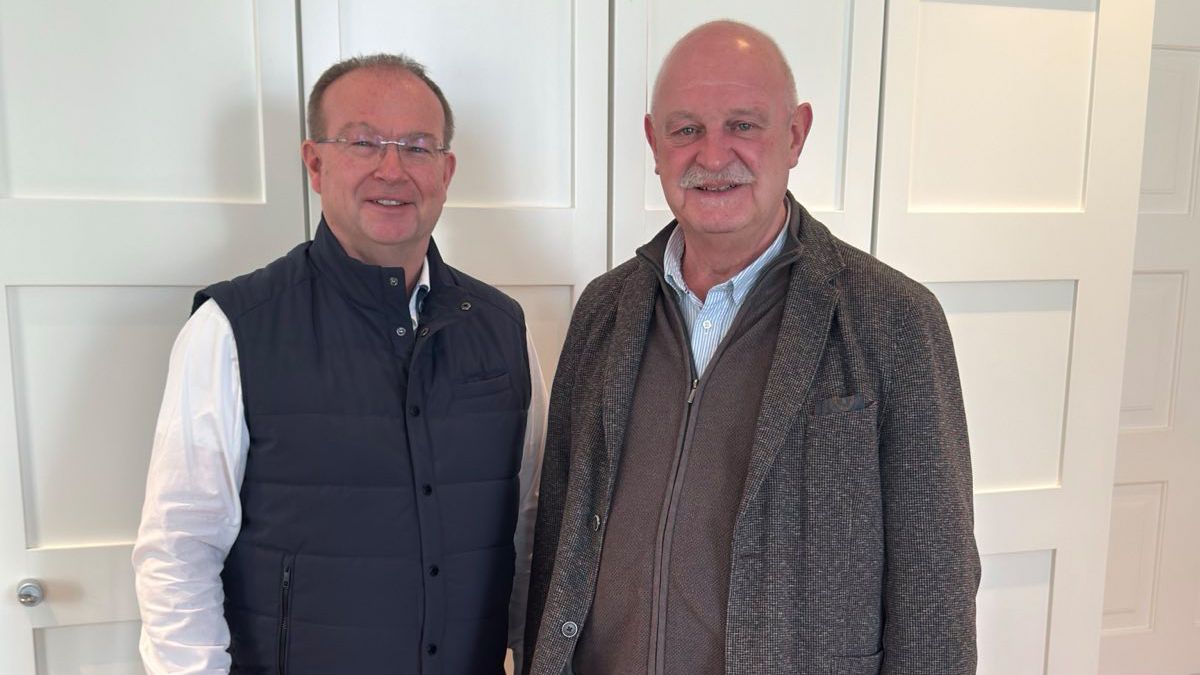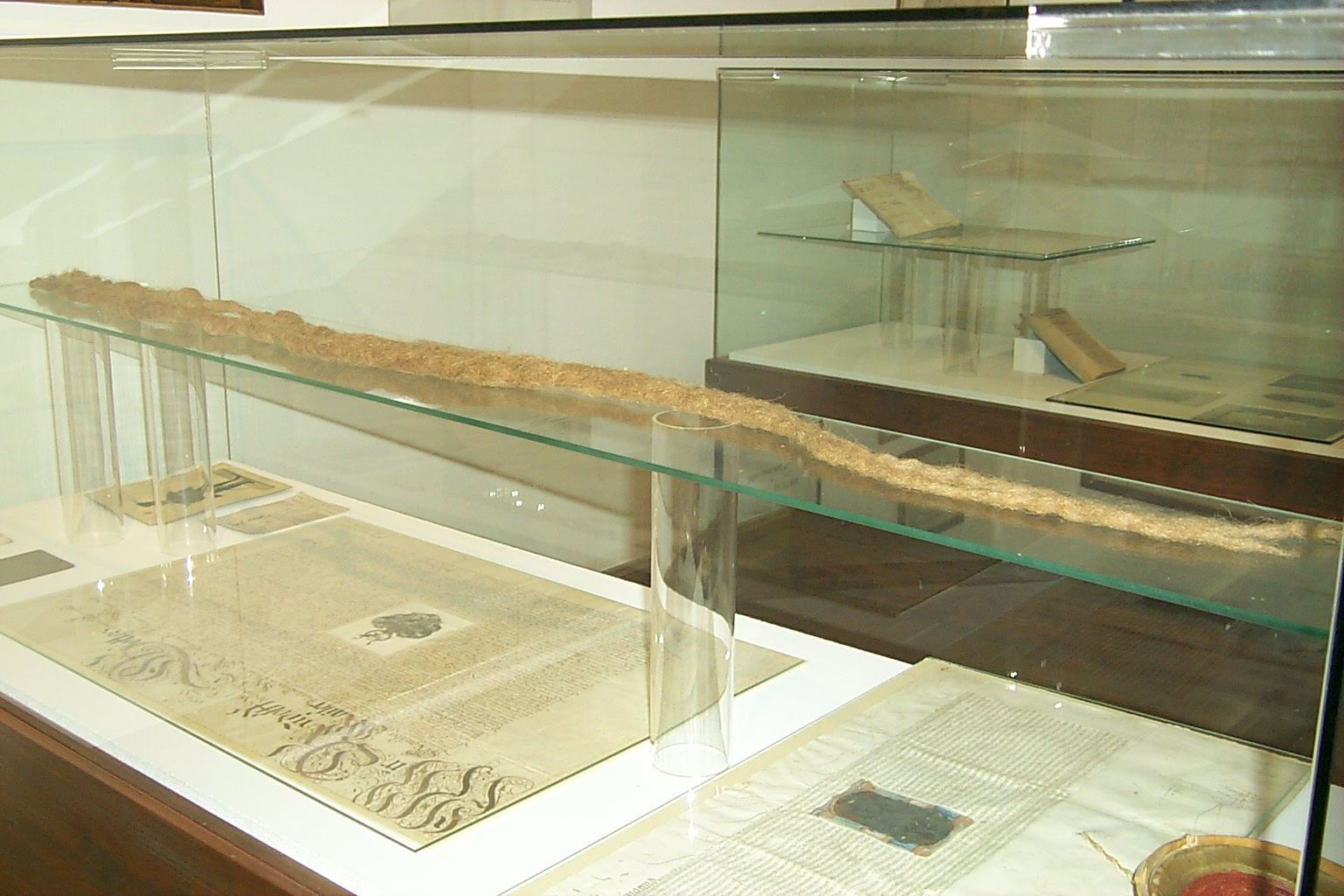
Braunau/Simbach: Inseparable like Linz and Urfahr
The festival location Braunau and the Bavarian town of Simbach on the other side of the Inn are socially, economically, and culturally interdependent. The Festival of Regions will not only have an impact on Simbach for this reason—the opening celebration will take place at the Simbach train station. In an interview with Johannes Waidbacher (mayor of Braunau) and Klaus Schmid (mayor of Simbach), we wanted to find out more about the intensive cross-border cooperation between the cities and how the FdR could impact them – and where visitors should go to explore life away from the tourist trail.
Braunau and Simbach have always been closely connected – what happens in one town usually quickly affects the other. In 1908, the Innviertler Braugenossenschaft (Innviertel Brewing Cooperative) raised beer prices. The result: the “Braunau Beer War” – the entire population of Braunau took to marching to Simbach every evening with a marching band to drink cheaper beer there, until the prices were quickly reduced. How close are the two towns’ cultural, economic and social ties today – and how often do people from Braunau or Simbach take advantage of offers in the other town?
Klaus Schmid: Very often. My message has always been – and Hannes agrees with me – that one side cannot do without the other. There are very good examples of this: in 2015 during the influx of refugees across the Innbrücke bridge, in 2016 during the floods and during the coronavirus pandemic. When the Innbrücke bridge is closed, businesses lose half of their turnover. We communicate a lot, we have a joint city marketing company and we – the mayors – are good friends. This is also reflected in the committees and is no different among the population.
Johannes Waidbacher: Klaus once put it very aptly: “The people of Simbach move around in Braunau as if they were locals, and the people of Braunau move around in Simbach as if they were locals.” That best expresses the close relationship. On a social and economic level, there are close ties. Many families from Braunau use the Simbach recreation area around the Schellenberg for excursions, while the people of Simbach love to visit the old town of Braunau. The people of Simbach love to go to the family-friendly outdoor pool in Braunau, while the people of Braunau love to go to the idyllic, quiet forest pool in Simbach. If the old Innbrücke, for whatever reason, is not available, social, political and cultural life almost comes to a standstill. The relationship between Braunau and Simbach can actually be compared to that between Linz and Urfahr.
Klaus Schmid: It is common for people from Simbach to work in Braunau and vice versa. Many people from Braunau also live in Simbach or vice versa, and the two town halls are separated by a kilometer as the crow flies, if at all.
Despite these close roots, do the two communities have different identities, what distinguishes people from Simbach from those from Braunau?
Klaus Schmid: When you live here, you notice slight differences in the dialect. But these are very subtle differences that only we recognize. For example, if we Simbach residents travel 50 kilometers further into Bavaria, we are often mistaken for Braunau residents or Upper Austrians. Especially in Munich.
Johannes Waidbacher: When we’re in Vienna, on the other hand, everyone there thinks we’re from Bavaria (laughs). We speak a certain Bavarian dialect, and in 1779 the Innviertel region only came to Upper Austria from Bavaria. At the time, they said that the Bavarian influence had to be driven out of the Innviertel, and that was done in school German classes. Around the Sauwald and in Kopfing (?) they didn’t manage that so well, but we Braunauers were relatively well Austrianized (laughs). Nevertheless, you can’t deny the close ties to Bavaria, of course; in the historical context, we were Bavarians much longer than we were Austrians.
When you walk or drive across the Innbrücke into the other city today, does it feel like you are crossing a national border?
Klaus Schmid: I can only speak for myself: it doesn’t feel like that. I feel at home in Simbach and in Braunau. The Inn connects more than it divides.
Johannes Waidbacher: In people’s minds, this border no longer exists. I don’t think about it anymore. Occasionally, when I cross over, I think of the old customs houses and the customs officers who were still there.
What has changed in comparison to the past?
Johannes Waidbacher: In the past, we were a strip on both sides of the border, the customs border district. In this customs border district, which also included Simbach, we were only allowed to make purchases worth seven market, which was about 50 shillings. If you drove out of the customs border district, you could shop for 1000 shillings, but you needed a bill for that. Nevertheless, you would have had to declare the amount on the other side. Not everyone always did that (both laugh).
Klaus Schmid: Of course, the situation was a challenge for smugglers (Waidhofer laughs). I remember that from my grandmother. The Austrians in Simbach were particularly keen on Austrian butter and especially on straw rum. We didn’t have anything like that where we came from. I noticed that very clearly as a young boy.
What was the exact background of the customs border district at the time?
Johannes Waidbacher: What the exact point of it was never became clear to me. We always said that we were actually second-class citizens. If you live in the customs district, you always have to travel out of it to be able to shop for a higher amount duty-free.
Klaus Schmid: If you now walk or drive over the bridge, there are often border controls by the federal police again. Personally, I find that very disconcerting, because we’re no longer used to that. Whether it’s necessary or not, I’ll leave open, but it’s just an unfamiliar picture in this day and age.
The Festival of Regions wants to cross borders, encourage collaboration and act as a bridge builder. Where can we start, are there still stumbling blocks?
Johannes Waidbacher: The cities are really well networked, and this continues at the association level. For example, there is a joint fishing association in Braunau/Simbach. When a climbing hall was built in Simbach, we participated directly and indirectly because it is also an offer for the people of Braunau. The nice thing is that we work closely with the neighboring communities on both sides, and at some point the close cooperation between the two cities has also rubbed off on the surrounding area. The cultural sector is also particularly intertwined. The “Musikfreunde Braunau/Simbach” network connects many musicians from both regions. The Braunau court theater is also cross-border, with a Simbach resident serving as deputy chairwoman, for example. Even though the cooperation is very close, cultural exchanges can be intensified.
Speaking of court theater: the “Kult-Ur-Theater” no longer has a fixed location in Braunau and will perform in Simbach for the first time this year. The topic is the subject of heated debate in Braunau, as was evident at the OÖN cultural round table in January. To put it somewhat provocatively: Do the people of Braunau have to fear that important Braunau cultural institutions will migrate to Simbach?
Johannes Waidbacher: The Bauhoftheater is not fleeing to enemy territory (laughs). The Bürgerhaus in Simbach, which was newly renovated after the 2016 flood, is an ideal location in terms of space, sound technology, and stage situation.
Mr. Waidbacher: A little more than 100 years ago, the Innviertler Künstlergilde (Innviertel Artists’ Guild) was founded in Braunau, and your grandmother was later guild master. What impetus can the Festival of Regions provide for the art and cultural scene in Simbach and Braunau today, what do you hope for?
Johannes Waidbacher: We will be at the center of Upper Austria culturally, during the festival and in the run-up to it, because more and more is being communicated to the outside. I am very pleased about that. Also that we can take our neighbors and friends with us. It was the same with the state exhibition, we also made sure that we promoted Simbach.
Personally, I expect that we will again attract more attention in the cultural field and that the scene will be encouraged, brought before the curtain, motivated. The Innviertler Künstlergilde has been proving for over 100 years that we have a culturally very diverse area on both sides of the border along the Inn – and also along the Salzach. There is a lot that lies hidden, and the Festival of Regions can offer a stage for it.
Klaus Schmid: We want to come even closer together through the festival. Hopefully, artists can be shown that good culture is also possible and recognized in rural areas.
What do you associate with contemporary art?
Klaus Schmid: It is very important for our city. Josef Karl Nerut, a great son of the city, lived in Simbach. His paintings are well known, some of them hang in the town hall today. We have many concerts, contemporary art is also cultivated in our local history museum. Every year there are about four to six openings there. Some time ago, I visited an exhibition of works by children and young people from the St. Rupert School in Eggenfelden. It was heartwarming and it was enormously impressive to see what people who are impaired are capable of artistically.
Mr. Waidbacher: You have already had very intensive contact with the FdR – a few years ago. How did that come about?
Johannes Waidbacher: A few years is good, that was a long time ago (laughs). At the time, I was the chairman of Kultur im Gugg. The Festival of Regions was making a guest appearance in the neighboring community of St. Peter and we were involved. I don’t remember the artist’s name exactly, but a “tractor ballet” was staged in a field near Hagenau Castle with Steyr tractors. It was a real spectacle, the tractors were raised with cranes. But I didn’t have a leading role, I sat at some cash desk (laughs).
Where do visitors to Simbach in Braunau go to find out about the towns off the beaten track?
Johannes Waidbacher: The best thing to do is to go to an inn and get suggestions directly from the locals. We have very good gastronomic establishments here, just like over there, with great beer gardens where you can get good coffee or a cool, fresh beer (laughs). You can meet the locals there at any time, whether they are from Simbach or Braunau, they are very open to encounters.
Klaus Schmid: If you’re a bit open-minded, you just have to sit down somewhere and look a bit sad. Then someone will say, “Go on, sit down with them.” (both laugh). We have a very small community. As a stranger, you are not a stranger for long. By the way, the center of social exchange in Simbach is the church square with the ice cream parlor there, where the popular kiosk is set up again in spring.

Incidentally, Hans Steininger (1508 – 1567) was elected mayor of Braunau six times and was known far beyond the town for his long beard. However, his beard was his undoing: he climbed on it and fell, from which he died. The beard is still on display today in the district museum in Herzogsburg.
